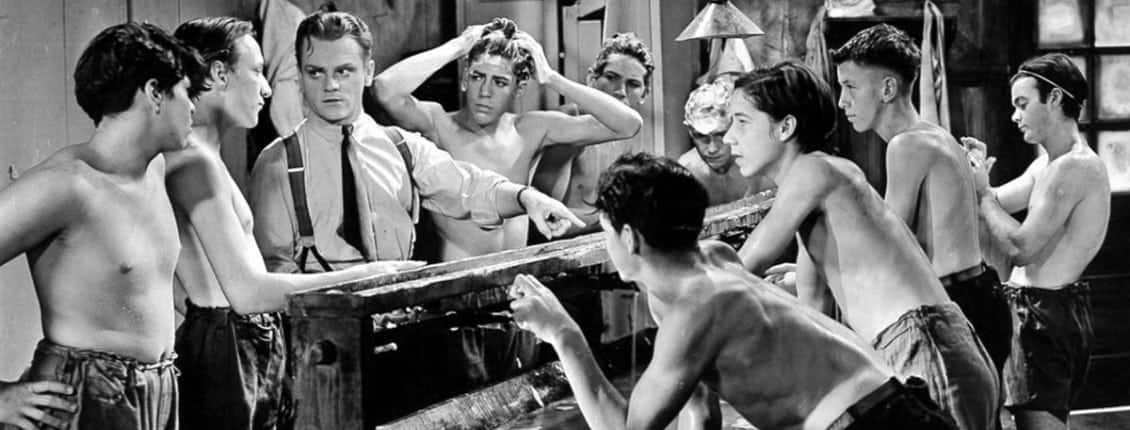
By Michael McNulty
“Whad-da-ya hear, whad-da-say, ” Warner Brother’s 1939 gangster offering saw James Cagney earn the first Oscar nomination of his career. Directed by Michael Curtiz, Angels with Dirty Faces is a gangster film that’s morally conscious.
The film opens as a young Rocky Sullivan and friend, Jerry, hang on the steps of a ramshackle building in a poverty stricken neighbourhood. The two, without a penny to their name and nothing to do, decide to knock off a goods train. The pair are spied by a railroad worker who alerts the police and the youths scarper to avoid arrest. Jerry manages to hop a fence, but Rocky is nabbed by the coppers and banged up in a reformatory for petty larceny and so begins his illustrious career as a criminal.
Sullivan spends the next 15 years beating wraps or doing stints in the joint and when we finally re- join him, now played by Cagney, he is being released from prison, having served a three year spell. Now he’s out he’s after a $ 100,000 that’s owed to him and being held by his duplicitous lawyer, Frazier (Humphrey Bogart).
Returning to his old neighbourhood Sullivan catches up with the friend that got a way, now Father Jerry Connolly (Pat O’Brien), a mild mannered, good natured priest, who has his heart set on transforming the destitute neighbourhood and keeping the street kids in it out of trouble. Although the two get along, conflict arises when Father Connolly feels Sullivan may be leading the kids astray.
This is a moralistic gangster flick, the two central characters representations, obvious as it may be, of good vs. evil, moral vs. immoral. For many, Angels with Dirty Faces may seem hokey and its moral message out-dated (the by-product of the Production Code that wanted to avoid presenting violence and a criminal lifestyle in a sympathetic light). But, it makes a fair go of addressing an issue that remains true to this day, crime is born out of environment, circumstance and misfortune.
With the opening shot of the film, a 30 second circular pan, Curtiz shows you the world of the story, a neglected neighbourhood, poor, and dilapidated. The street kids (played by The “Dead End” Kids) that Father Connolly and Sullivan vie for are exactly that, dead end kids, poor and bored and much like their role models did 15 years previously, have turned to petty crime to pass time and fund activities.
Cagney’s portrayal as Rocky Sullivan is rambunctious. He is a wisecracking roughneck who speaks as much with his gestures as he does his words. Sullivan is brought to life by Cagney’s careful attention to detail, the mannerisms he used reportedly taking inspiration from a man Cagney knew when he was a youngster growing up on the East Side of New York. Sullivan is undeniably likeable, a charismatic, fast-talking anti-hero with a dry sense of humour and the character has been so lasting that he now forms the basis for any gangster caricature and impression.
The ambiguity of the end of the film is up for debate. Whether Sullivan performs what has been asked of him by Father Connolly or reacts out of genuine fear and despair, is entirely up to the viewer to decide. But, what remains certain, and for fear of spoiling the fun will also be left ambiguous, is that the tracking shot in the final moments of the film is a chilling masterpiece of direction. “Don’t be a sucka,” and watch this film.